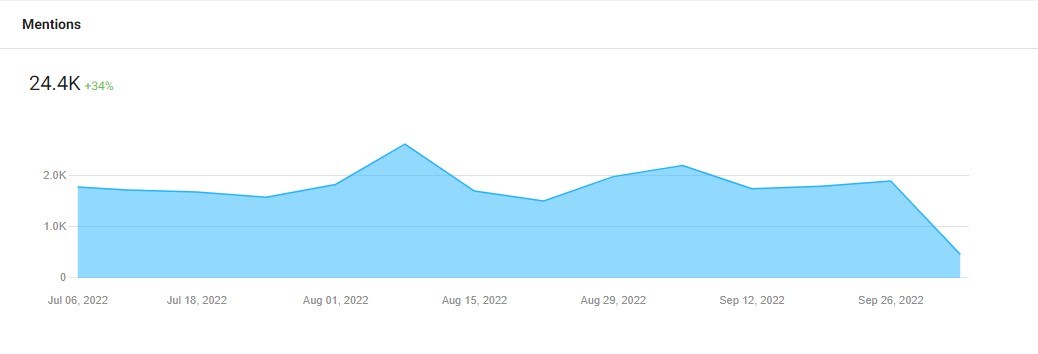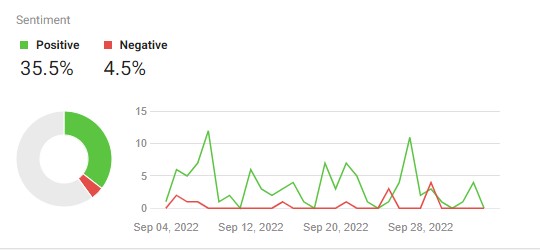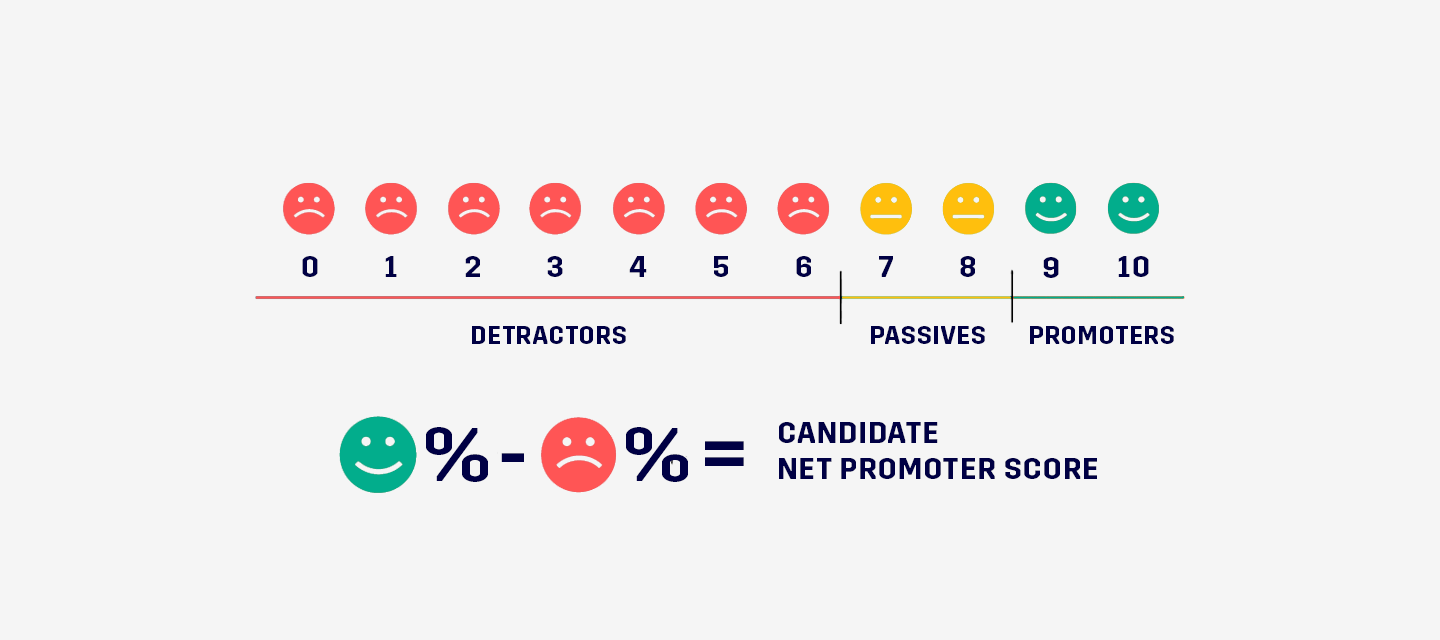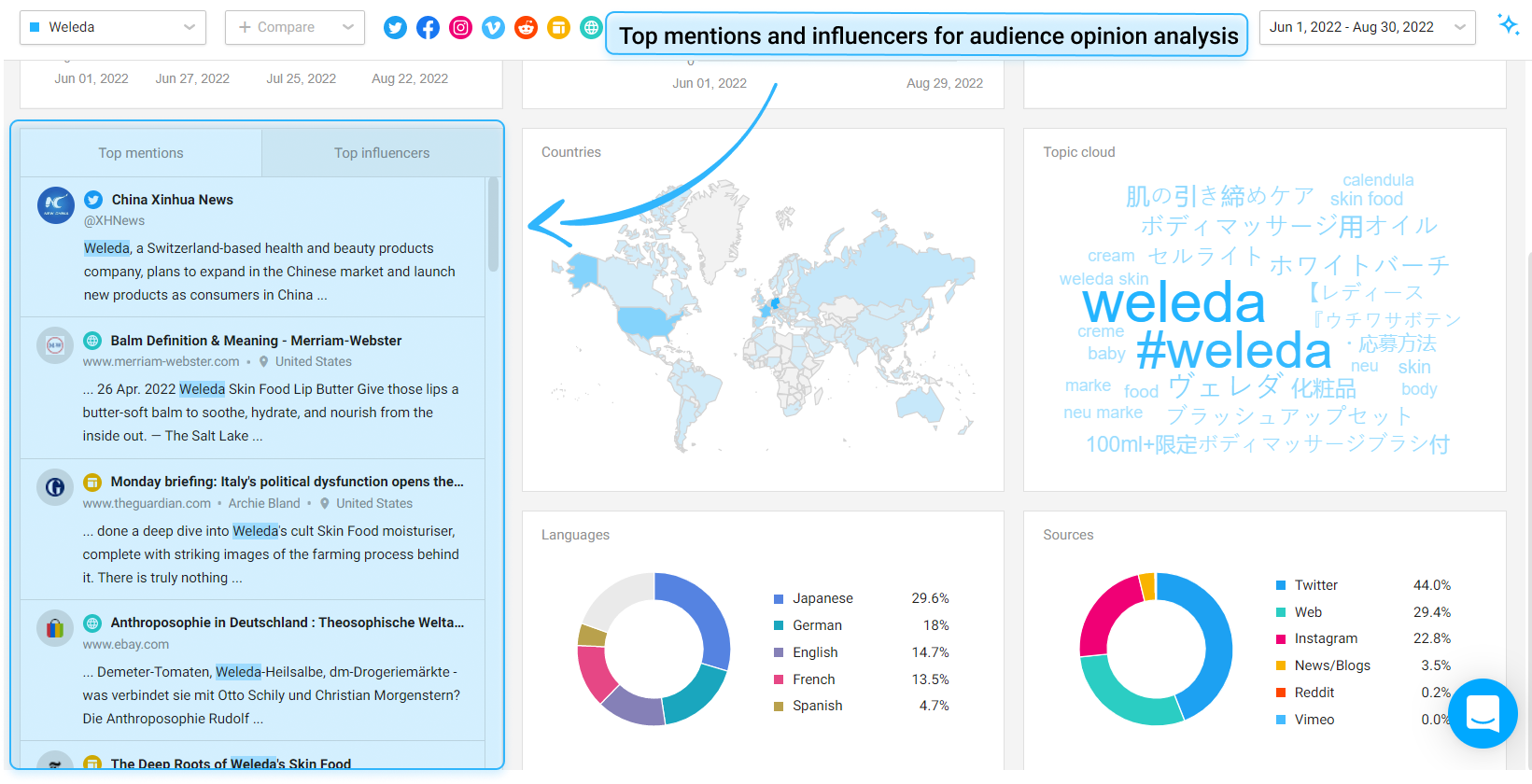Social listening metrics & KPIs: What (and how) to track

Artice Summary
KPIs, we’ve all heard of them and some dread them, but they are important tools for measuring success. Here’s how to use them to your advantage.
Aesthetically pleasing socials are one thing. But aesthetically pleasing, pointedly written posts — that’s a whole other ball game. And anyway, how do you know when your posts are hitting a home run or whether they’re missing the base completely? The secret is in the results.
Of course, your business should always be result-oriented, and this is especially true in difficult economic times or in times of unpredictability, when it’s crucial to avoiding wasting any resources you have (be it time, money, or people) and, instead, focus on something much more valuable.
So, then how do you ensure your business strategies are not being implemented in vain? How can you be certain that the steps you take lead you to your business goals? By evaluating these steps, of course! That’s right—with key performance indicators (aka KPIs).
What is a KPI anyway?
A KPI is a set of values that is used to measure the key drivers of your business performance. Think of a KPI as some kind of compass that helps you understand if you’ve chosen the right path to achieve your goals or not.
Remember
To get the most relevant insights out of performance evaluation you need to choose which KPIs to measure based on the goals you set for your business.
Assigning specific KPIs to all your marketing activities helps guarantee their efficiency or at least the ability to assess them so you can improve it — that should always be your goal, right?
While social listening is widely used to inform all kinds of business decisions, not too many marketing professionals try to incorporate social listening data into business KPIs. And they are missing out! If you take a look at your social listening analytics, you'll realize that many social listening metrics can be interpreted and used as key performance indicators.
By signing up I agree to the Terms of Use and Privacy Policy
Now, you’d think that since we are trying to explore how social listening metrics tie into business KPIs, the only part of business performance we are going to evaluate is social media marketing. That’s not true at all!
Although you could use social listening statistics to assess your social media strategy, social listening data can bring valuable insights for all the business decisions you make— from product development to sales. In fact, social listening metrics can be used to evaluate various aspects of your company and be tied to different KPIs.
Intrigued? Good! Keep reading and you’ll learn how social listening metrics correspond to major business KPIs and how social data can level up your business performance evaluation process.
Business KPIs and social listening metrics
Most KPIs can be enriched by social listening data, but none more so than customer-related KPIs. This is only logical as, in the majority of cases, you’re monitoring mentions using your existing or potential customers. That’s why this first KPI isn’t going to come as a surprise.
Business KPI: Brand awareness
Before you even begin to measure anything else, the first thing you’ll need to do is make sure people know about you. That’s why this KPI is perhaps one of the most telltale measures of your marketing efforts. This is especially true for companies and startups that are new to the market.
Brand awareness shows how many people in your target audience know about your company. It’s a great KPI to start your performance evaluation with since people have to be familiar with your brand before they can form some sort of relationship with it and start making purchasing decisions.
Detecting your brand awareness level can be difficult. Not only do you need to figure out a way to poll people, but you also have to hone your research on your target audience, not just random people on the streets. The good news is, social listening can solve both of these problems. Awario provides users with several social listening statistics that can help determine your brand awareness levels.
Reach of mentions
If you want to find out your brand awareness level, reach is a perfect metric for this task. It showcases how many times your brand name was seen online. You might be wondering why I chose this metric and not the number of mentions but reach is a much better indicator of your brand awareness.
When we look at the number of mentions, we assign the same weight to each mention, but this doesn’t tell us what we need to know when it comes to calculating brand awareness. An Instagram post from an influencer and a tweet from a casual Internet user affect your brand awareness in dramatically different ways. That’s why the reach of the mentions is so important.
To track brand awareness with Awario, you need to create an alert monitoring for your brand’s name. You can also create alerts for specific products. For example, if you want to determine brand awareness for a new launch of a new product. Once you’ve done that, go to the Mention Statistics report and see your overall reach as well as the statistics for specific countries, platforms and so on. As time passes, you’ll be able to see brand awareness, general trends and make conclusions about the lasting effects of your marketing strategy.
Remember
Stats aren’t just there to look good in a report. Use them to improve your strategy and help your brand connect.

Share of voice
This metric helps you put your performance into context and benchmark your brand awareness against that of your competitors. Share of voice (or SOV for short) illustrates just how much of your niche (what percentage) your brand occupies in comparison to your rivals.
In addition to your brand alert, you’ll need to create alerts with the names of your competitors, one for each of them. Then go to the Alert Comparison report, select the necessary alerts and voila, you get your share of voice. Awario shows you the comparative analysis for each social media platform and country, so you can see which segments of the market are taken by you or your competitors respectively.

Number of mentions
This metric is the one that stands out most and helps determine how many people are aware of your brand. It’s quite simple—the more people that recall your brand, the more potential customers you have, the more interest you’ll have in your offerings. Straightforward, right? Unfortunately, it’s not that simple to measure this metric.
The main difficulty to estimate the number of mentions is actually about identifying them. The simplest and yet the most valuable mentions are headed with a @mentions. These are the straightforward appeals when people want your brand to be aware of what’s being discussed.
However, often people refer to brands without addressing them directly. This means that people don’t expect brands to get involved in conversations. That’s why a large volume of mentions are “hidden” from them. So what to do about it?
Social media listening tools to the rescue. Social media listening tools can go further than just gathering and calculating @mentions. They also pay attention to conversations where people don’t mention brands directly, use possible brand abbreviations, or misspell brand names.

Moreover, some advanced social media listening tools such as Awario and Talkwalker can monitor brand mentions within the context. For example, if your brand has commonly-used words in its name such as Apple, these smart tools filter out the unrelated conversations and bring to you the very essence. This is all possible due to the Boolean search feature.
The Boolean search allows finely tuning up the search process — adding and combining several search queries while filtering out the unwanted words, concepts, or locations. This way, you’ll be able to grasp the overall picture of your brand mentions whether they are tagged, untagged, varied, misspelled, and more.
Business KPI: Customer Satisfaction (CSAT)
They say: “the customer is always right”. It’s true, happy customers make successful businesses. But, how is it possible to calculate "happiness". After all, you're not going to measure the size of the smile your customer gets when buying your product.
The traditional way to measure CSAT is by surveying and polling your clients, but there are a few downsides to these methods. Firstly, it can be quite tricky to motivate your customers to answer your questions. Some businesses offer various incentives and rewards for completing surveys, but even then people can be unwilling to take time to respond to questions. And secondly, the nature of a poll or a survey makes them quite limited tools: customers won’t tell you something important if you don’t ask about that—the don’t ask, don’t get mentality. And not only that, they may be influenced by how you phrase and pose the questions, so a survey can never be 100% unbiased.
Social listening is the perfect solution to these problems! People express their opinions on the Internet organically. What’s even better? Awario is the perfect tool to measure your customers’ satisfaction, and it’s right at your fingertips. The most important social listening metric here will be the sentiment and you can calculate it in the app.
Sentiment score
Many social listening tools, including Awario, offer sentiment analytics. Essentially, the tool uses language processing algorithms (NLP) to determine whether a social post expresses positive, negative or neutral emotions and then aggregates all this data to show the overall sentiment around your brand and products.

To monitor your sentiment score, all you need to do is to create a monitoring alert with the name of your brand and your products or services. Awario will immediately start to collect and analyze mentions to show you the shares of positive, negative, and neutral posts mentioning your company.

Tracking your sentiment score over time shows changes in your CSAT, but it can also be useful to look at individual mentions. Awario lets you filter your Mention feed to see only the mentions with a specific sentiment which can help identify why your customers love or hate your product (depending on the sentiment you choose to focus on).
Net Promoter Score
If the CSAT shows how happy your customers are, the NPS benchmark shows how willing they are to share this happiness with others—who doesn’t want to pass on the happiness. The Net Promoter Score (NPS) is used to show how likely your customers are to recommend your product or service. Typically, it’s calculated based on customer surveys or the leads you get from your referral program if you have one set up.

The great thing about social listening is that it collects publically available data, meaning that Awario collects and analyzes posts that are published to be seen by users’ followers. If your customer is complementing your product or recommending it in a Twitter reply, what is this if not net promotion? This KPI fits perfectly with the number of positive mentions and is great for seeing how much people love your product.
Number of positive mentions
This is quite self-explanatory: the more positive public mentions you have, the higher your NPS. It’s essentially a part of sentiment analytics, so you don’t need to set up a separate alert just to calculate the number of positive mentions. The only thing I’d suggest is adding a link to your landing page if you sell your products online. That way you can see the number of positive mentions which may directly lead to conversion. Otherwise, you’re good to go.
Business KPI: Campaign target
A strong understanding of your audience is the key to developing successful marketing strategies. That’s why before starting something more global like a marketing campaign on social media, you’ve got to thoroughly investigate your followers. Who is watching your brand?
By signing up I agree to the Terms of Use and Privacy Policy
Learning more about your audience will help you direct your marketing efforts at the right people, on suitable social media platforms, with a well-tuned brand aesthetic, and a tone of voice that resonates with them.
This is how social media listening tools help marketers draw up an accurate picture of their audiences:
-
Researching audiences before launching a campaign to define the follower groups they want to target
-
Non-stop campaign monitoring to make sure that everything is going according to the marketing campaign plan
-
Discovering more groups that marketers could overlook in their targeting
-
Providing deep audience and market insights so that marketers can effectively pivot their campaigns in line with the anticipated changes.
Here’s how social media listening tools do it.
Gathering demographic data
Social listening tools gather and analyze reams of various demographic and behavioral data and provide refined insights in their reports.
The types of data collected on social media usually include the social media channels your audience visits for communication, most popular languages among them, their living locations, their interests? and professional background, and many others.

As your social media listening tool collects and organizes your followers’ data, you can set it up to monitor and analyze the conversations that happen among various audience groups. These groups preserve certain demographic characteristics and using search filters you can navigate through them. This way, you’ll be able to carefully “listen” to their talks across social media platforms and better understand who your followers are and what needs and pain points they have. Think of social media listening as being in your followers’ inner circle.
Influencer analysis
Influencers are another valuable source of information about your audience. By monitoring and analyzing the most noticeable and appreciable influencer personalities in your niche, you can gain more insights on what your audience loves best, hates most, and who they heed and look up to.
While influencer analysis is an important part of your target audience investigation, social media tools can differently find and review them. Some tools highlight influencers by keywords that you provide. Others go through the follower networks, identify the connections between users, and determine the most popular accounts in your target group. For example, Awario uses both methods which allow identifying the niche influencers most accurately.
When you know exactly who the influencers in your niche are, it provides you with lots of knowledge about your audience and opportunities to get your brand viral by working with some of them during your marketing campaigns.
Plus, you can even create influencer marketing campaigns with the right personalities for your brand even easier.

Business KPI:Conversion Rate
Speaking about conversions, let’s talk about your boss’s favourite KPI—conversion rate. Conversion rate shows how many of your leads end up actually purchasing your product and therefore has a direct correlation with your revenue.
The problem is, the relation between this KPI and social listening metrics is a bit less straightforward than other KPIs covered above. You can’t really use social listening to determine how many people got in your sales funnel … or can you? Awario makes it possible through its Awario Leads module, so you can really see how your interactions and socials genuinely lead to sales.
Number of social leads
So how do you count your conversion rates using social listening? Well, to enrich your sales KPIs with social listening data you need to make it social, meaning you have to get involved in lead generation on social media. Chances are you are already posting CTAs on social media, but I’m talking about something a little different. I’m talking about actively seeking out people who want to purchase a product or a service like yours and instantly engaging with them. This is the 21st century, after all.
It might sound like a HUGE task, but Awario Leads makes it as easy and not-too-demanding as a whole lot becomes possible with automation. All you need to do is set up your Leads alert.
This will require a short description of your product and the names of your competitors. Once you finish setting it up, Awario Leads will start looking for people expressing interest in a product like yours or people unhappy with your competitors, giving you a perfect opportunity to acquire a new customer or reconnect with an old one.

If you create a trackable link for your social selling efforts, you’ll be able to see an actual conversion rate (the number of purchases divided by the number of engaged leads).
Engagement metric
If you manage to create interest in your brand, then people will start actively interacting with it in various ways—following your brand pages on social media, commenting, liking, participating in marketing campaigns, social sharing, directly mentioning your brand, and more. This is called engagement. And if tracked, corrected, and fuelled, it can lead to conversion.
The engagement metric can include lots of various actions that social media users can take at first only to get in contact with your brand and eventually convert into loyal buyers. So, which metrics are more important and which are less important to track? Actually, this depends on what you are aiming to learn as the motivations behind these actions are different.
For example, a ‘like’ can work as an approval of your ideas and values or just a way to attract a brand's attention and say hello. A follow means that a user wants to stay updated with the brand’s news and stay in touch with it for longer. A social share is a recommendation and demonstration of customer loyalty.
To estimate the engagement metric, marketers usually track several indicators. This way, they get a more comprehensive vision. For example, a beautiful post that gathers lots of likes but no comments isn’t necessarily bad. It just doesn’t include a call to action and doesn’t encourage discussion.
So, if a post does have a call to action but if it has few comments and no shares, it can be a sign of poor brand performance on social media.
Having a clear understanding of what’s happening with your brand on social media can provide you with more ideas on how to improve your marketing strategies. Also, it allows you to stay flexible and quickly adapt to global news and changes.
Social listening, KPIs, and ACTUAL results
Want your business to be successful? Then you need to understand what’s actually happening with each and every part of your company, and what people are saying about it. After all, sentiment matters.
That said, we often fall into the fallacy of measuring just for the sake of measuring. This means tons of data, but no real use for it. At the other end of the spectrum, we have a different error: having an amazing analytics tool at your disposal and not using it to its full potential. It might seem like a lose-lose, but if you’ve been paying attention, you’ll know there’s a sure-fire way to turn it into a win-win.
In his article, I tried to solve both aspects of this problem: on the one hand, emphasize that every metric we track should give us valuable insights, and on the other hand show the power of a tool like Awario and its benefit for your business beyond social media marketing.













